Junblog 2023
Travelogue, archaeology, cuisine, etc.
The month of May proved a splendid time for a visit to the Scottish Highlands and Islands. The hillsides around Loch Ness blaze with great lush thickets of vibrant yellow gorse, the midges have not yet erupted from the bogs and ditches to make hillwalking hellish when the breezes drop. The Scottish secessionist movement has thankfully imploded under scandal and infighting. Our kids and grandkids thrive. The Scots Steak Pies* remain the pinnacle of British cuisine. I had a splendid time.
(*The ubiquitous Cornish Pasties remain a severe downside to my life in the Southwest. Bakeries seem to serve little else here except these artless greasy pastries filled with ghastly shovelfuls of swede, turnip, and mean gristle, whereas the noble Scots Steak Pie contains nothing but generous portions of bovine muscle tissue in fine gravy.)
On the slopes above the Ness, I came across a rare patch of about twenty False Morels, Gyromitra esculenta: -
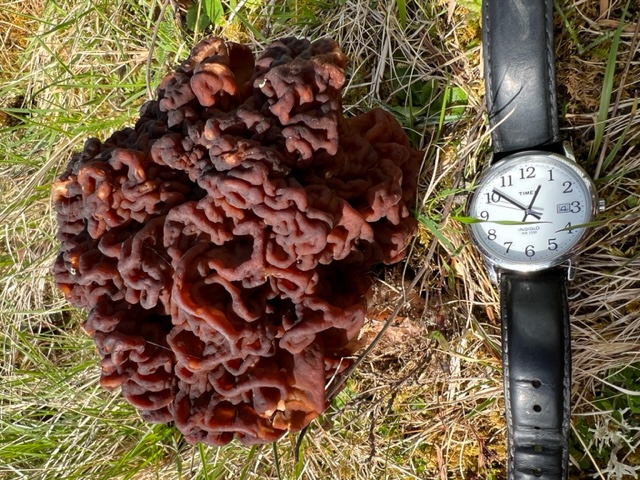
These strange fungi resemble something between blowtorched spaghetti and mummified brains. They can kill you if you eat them, they can also kill you if you merely try cooking them, as they then give off methyl hydrazine gas.
Mainland Orkney seemed even more heavily livestock farmed than when we visited it half a century ago. Barely a tree or hedge remains anywhere, just endless rolling slopes of fenced grassland and sad stinking barns full of livestock kept mainly indoors to fatten whilst machines plant, harvest, and fertilise the grass for them. (I had better check on the ethical sourcing of those pies.)
All the wildlife clings to the Orcadian coast, we saw plenty of seals and a splendid variety of seabirds. As I went beachcombing in heavy boots, three layers of clothing, woolly hat, and gloves against the chilly conditions, our three hardy oat-fed highland grandchildren stripped off and hurled themselves into the icy north sea to frolic in the waves, laughing at us soft Sassenachs.
Fairly recent archaeological discoveries on the Ness of Brodgar between the small stone circle of the Stones of Stenness and the huge stone circle of the Ring of Brodgar have led to some interesting speculations. The historian Neil Oliver has presented some rather grandiose ideas about their significance. Do the neolithic remains on the Ness of Brodgar imply that Orcadian neolithic culture predates and inspired the culture that built Stonehenge? Do these remains imply that a Neolithic Theocracy dominated Orkney and built the stone huts and stone circles as a centre of religious cult activities?
I rather doubt this. The stone huts do not seem that large or temple-like when you get close up. They probably built in stone because wood had become increasingly scarce. Neolithic cultures consumed huge amounts of wood for cooking and heating, tool hafting, and roof building. The small lathe and hide Neolithic boats could not have transported significant quantities of timber from mainland Scotland once supplies had become exhausted on Orkney. Orcadian civilisation appears to have gone into severe decline until the development of bigger boats in the iron age.
The Ring of Brodgar seems singularly unsuitable for religious or cultish rituals, or even as a ceremonial meeting place. It has a diameter of 340 feet, you cannot even shout across it in a slight breeze, and it does not seem to have any features in its centre. The ring seems more like an example of Clan Power Bling to me. It seems more likely that some local warlord had it built as a statement of authority, control, and ownership of the land and the people. The stone huts contained very few items that looked like they could have had a religious function, but they did hold a number of finely worked stone mace heads for cracking skulls and intimidating people.
Appeal
I had a very enjoyable and fascinating day at Joanna William’s Fire Iron Art forge and studio at Bristol Docks after receiving a voucher for a day’s blacksmithing experience for my birthday.
See Joanna here at work in her forge and studio: -
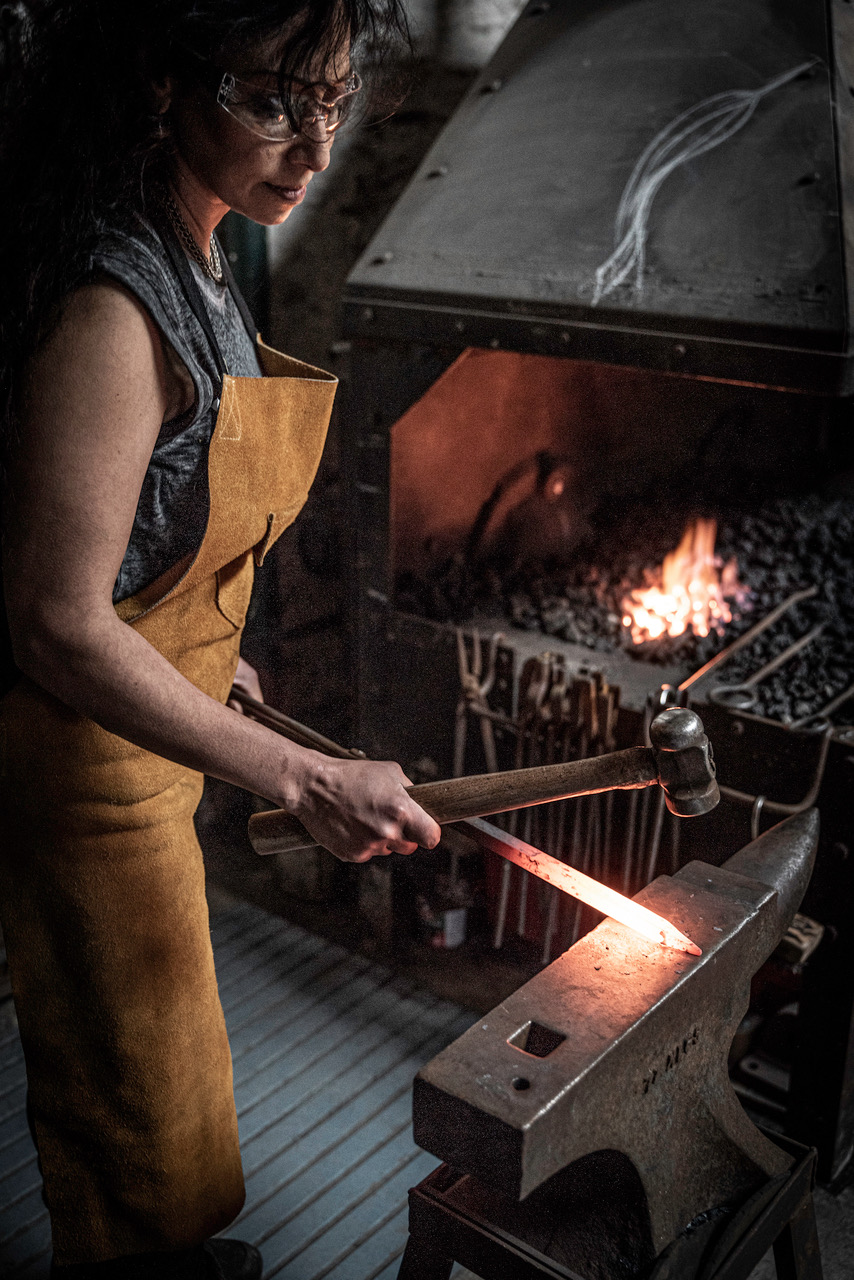
Joanna guided me through the basics of the blacksmith’s craft showing me how to heat iron in the forge and then shape it with hammer, anvil, vices, and tongs. Herewith my apprentice pieces made on the day, a selection of useful hooks and hangers with a pleasingly rugged antique aesthetic.
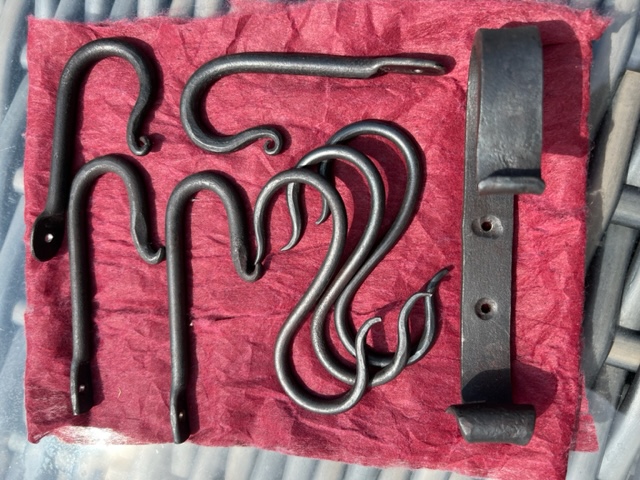
Towards the end of the day Joanna indulged my request to try and hand forge some esoteric instruments and she expertly guided me through the process. Herewith three forged iron Pocket Wands which can also serve to delineate Triangles of Arte in works of evocation.
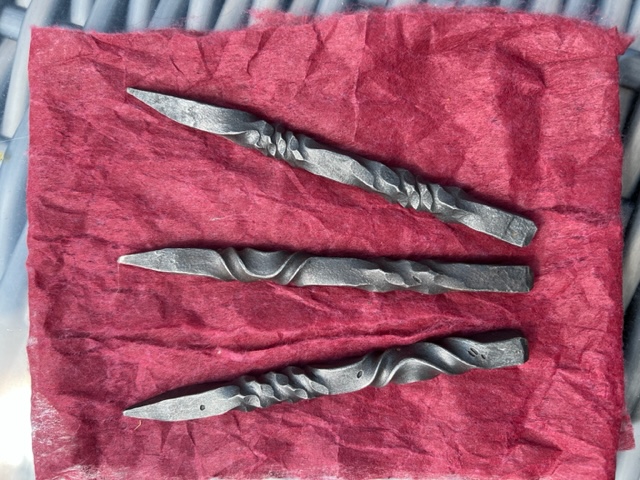
I had a great day at the forge, and I commend the experience to anyone interested in developing their creative craft skills.
I have since seem Joanna exhibiting her own creations at various sculpture and craft events and her skill and dedication, and artistry never ceases to amaze. One day I hope to commission her to create splendid wrought iron gates for my home.
However, disaster has struck Joanna’s enterprise. A night-time arson attack on adjoining buildings in the Underfall Yard at Bristol Docks has also pretty much destroyed her forge and studio.
Here is a link to the crowdfunding appeal to help Joanna restore her facilities and continue to practise and teach the skills of blacksmithing and artistry in iron.
https://www.justgiving.com/crowdfunding/fireironartblacksmith?utm_term=pWbX8gyJx
Please give what you can towards restoring her forge and studio after the tragic fire.
The CMBR
Hypersphere Cosmology has successfully explained most the data from which orthodox cosmology has cobbled together the conventional concordance model of LCDM Big Bang Theory and replaced it with a simpler and more elegant model that has no singularities, inflation, expansion, dark matter, or dark energy.
The Cosmic Microwave Background Radiation alone remains not rigorously reinterpreted within Hypersphere Cosmology.
Within the LCDM model the CMBR consists of relic radiation from a period about a third of a million years after a Big Bang when the primeval fireball had expanded and cooled to a mere 3,0000 Kelvin and deionised to become transparent to light. Subsequent ‘expansion of space’ or the separation of gravitationally bound structures within the universe has supposedly stretched out and redshifted the wavelength of the 3,000K light to a wavelength corresponding to 2.70 Kelvin. We can make out a fairly credible mathematical case for this but at the price of assuming that the contents of the entire or observable universe once occupied an infinitely or insanely small volume at unrealistic temperature and density.
As Hypersphere Cosmology can provide an alternative interpretation for all the rest of the cosmological observational data without using the hypotheses of a big bang or an expanding universe then it requires an explanation of the CMBR to complete its case for a new paradigm.
Some cosmologists continue to wonder of the CMBR may arise from the redshifting of starlight from distant sources to the point where it thermalises into equilibrium with cold dust and gas in intergalactic space. In other words, the thin intergalactic medium has a basic temperature of only 2.70 K and once starlight has become redshifted to a corresponding temperature it continues to bounce around at relatively short ranges and remains at that wavelength, in thermodynamic equilibrium with the medium.
A couple of fairly recent papers explore this idea further.
https://iopscience.iop.org/article/10.1088/1742-6596/2197/1/012026/meta
https://academic.oup.com/mnras/article/478/1/283/4975800
Alternatively, Hypersphere Cosmology can perhaps supply a mechanism. As any gravitationally bound structure in the universe will rotate by hyperspherical vorticitation to its antipode position within the universe every 13 billion years, and any light emitted will also tend to reconverge in highly redshifted form on its antipode position in the same period, then the CMBR we observe may consist of light emitted from our own and nearby galaxies reconverging here 13 billion years later.
A redshift of 3.0000 K starlight by a factor of z = 1100 suggests that it may have come from a region of space about 1/1000 of the size of the universe. This corresponds roughly to the local group of gravitationally bound galaxies - our Milky Way, Andromeda, Triangulum, and a swarm of smaller ones. The power output of the local group roughly matches the power input of the CMBR; however, the photon count seems badly off.
All collaboration on this topic welcome.
My Sci-Fi Hobby.
The winter storms have washed up more insulation blocks on the shores of the Welsh hideaway that conceal the spaceship yards of Lithonia and other empires. Plus, over winter I have collected spent vape accessories, old electric razor components, discarded nitrous cylinders, and small bits of metallic scrap and junk from all over.
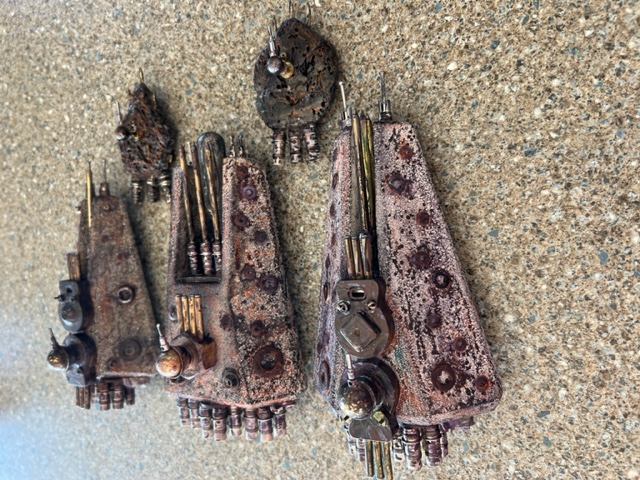
The Lithonian empire now faces a challenge from these dark dreadnoughts.
In time this may lead to a vast boardgame on the beach with a scale of a yard to ten light years, or perhaps to a novel about Artificially Intelligent ship-minds and their motivations as a metaphor for the great existential and political questions.